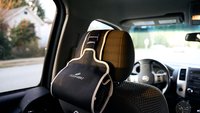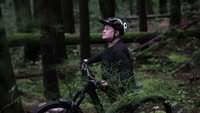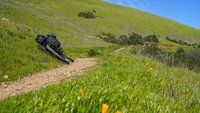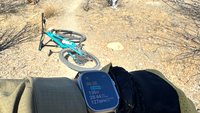I built an XC trail/loop a few years back that can be ridden both ways, AmbideXCrous. The terrain is pretty steep. It was challenging to make it a fun trail when it points down but not too hard when you are riding up the opposite direction. I've gotten pretty good at incorperating bench cut and switchbacks into my build style. The Muddbunnies used AmbideXCrous as their backdrop for November in their 2013 Calander.
Last month, I attended the Arcteryx Builder Academy workshop put on by FVMBA. Mark Wood had talked about different technics with bench cuts and cribbing. One of the technics he covered was the Deadman Anchor. This essentially is perpendicular beams that are tied into the outside cribbing, then barried into the benchcut. Its meant to help prevent the outside crib from falling away when you are unable to stake it in.
There are a few ravine crossings on AmbideXCrous. For the most part of the year, these ravines are dry. But in the winter and early spring melt, they can really see some heavy flow. And after a few years of heavy rain filling a ravine and the stream digging away at its banks, one of my ravine crossings needed some attention.
Heres my recent rework on one of the ravine, using the Deadman Anchor. http://www.facebook.com/media/set/?set=a.459074447461018.92270.185261884842277[HTML_REMOVED]type=1










